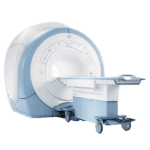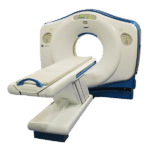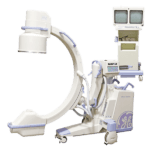Tesla is world renowned for his many inventions and ideas concerning the alternating current electricity supply system
The Serbian-American inventor, electrical and mechanical engineer, physicist Nikola Tesla was born in 1856, in modern day Croatia. Today, Tesla is world renowned for his many inventions and ideas concerning the alternating current electricity supply system, wireless communication, and more; but it wasn’t always this way. In honor of what would have been his 160th birthday on July 10th , let’s take a look back at the man who, without, modern day life and the medical industry simply would not be the same.
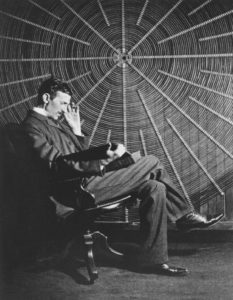
During Nikola Tesla’s life, and right after his death in 1943, a ton of his work was lost and fell into obscurity. But today, 73 years after his death, Nikola Tesla is finally getting the attention he deserves. He is everywhere these days; being depicted as a science fiction hero in novels and comic books, having holidays named after him and his birthday being considered Nikola Tesla Day by fans worldwide; making appearances in major novels and films (a major one being The Prestige, in the 1995 novel and the 2006 Christopher Nolan film, in which Tesla was portrayed by none other than David Bowie,) being mentioned in songs and YouTube videos, being turned into a line of toys and other quirky items from The Unemployed Philosopher’s Guild (which is basically every nerds favorite online store,) and is the subject of a comic by humor website The Oatmeal called “Why Nikola Tesla Was The Greatest Geek Who Ever Lived.” (The creator of The Oatmeal is notoriously obsessed with Tesla).
And that’s just for starters.
Why is Nikola Tesla suddenly so popular, you ask?
Maybe because without Nikola Tesla, we wouldn’t enjoy even half of the luxuries we do today. He invented many things in his lifetime that went unnoticed, and a lot of the time other scientists took credit for his inventions instead, because, unfortunately, Tesla did not have the marketing skills needed to sell his ideas (while others took full advantage.) His increasing popularity seems due to the fact that people have figured out just how crucial Tesla was to, well, almost everything (which we’ll get to in a minute). And not only that, he was known for having a “mad scientist” demeanor: his OCD, multiple quirks, witty sense of humor, sense of style, ability to memorize complete books, photographic memory, his claim to have never slept more than two hours, and his mastery of eight languages – Serbo-Croatian, Czech, English, French, German, Hungarian, Italian, and Latin – all helped seal his image as a historical geek icon.
What I’m getting at is, Nikola Tesla was better than all of us. Don’t believe me? Keep reading.
Nikola Tesla invented and tinkered with so many different products and devices in his 86 years that it would be impossible to discuss them all in one blog post. So for today I’ll simply skim the surface of his many brilliant ideas and genius level intelligence, including those that influenced the medical industry and how it operates today. Let’s just say radiology would definitely not be the same without him.
Among Tesla’s many inventions include prototypes of practical alternating motors and the polyphase system used for mostly all electricity used today, especially the electricity used for giant steam electric power plants and hydro electric projects including the Boulder Dam. Tesla is also called the “Father of the Wireless” for his innovative findings on continuous waves, coupled and tuned circuits (including the Tesla Coil, which is used in one form or another in every radio and TV set today,) and stranded conductors (among many, many others); he also created many neo type bulbs and fluorescent lighting, mechanical power, artificial lightning, wrote out ideas on radar, tinkered with broadcasting, and more. Yes, more. Much, much, more.
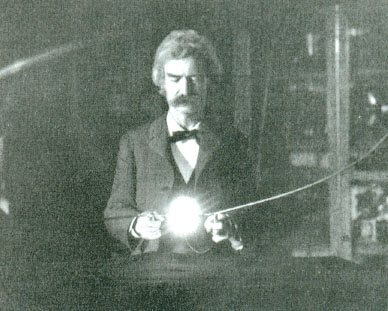
In the medical industry, a Tesla is known as an SI-derived unit of magnetic flux density, used most notably when discussing the power of an MRI machines, as in 1.5T and 3.0T.
In the medical industry, a Tesla is known as an SI-derived unit of magnetic flux density, used most notably when discussing the power of an MRI machines, as in 1.5T and 3.0T.
Tesla also discovered the X-Ray around the same time that the credited inventor, Wilhem Conrad Rontgen, did. In the 1890’s, Tesla and Mark Twain had become good friends (Twain was very fond of new inventions and technology,) and during one of their lab meet ups, Tesla accidentally discovered X-Rays when he took a photo of Twain being lit by an electrical device called a Crookes tube. In 1896, Tesla published X-Ray photos in Electrical Review, and they appeared at the same time Rontgen announced his discovery of X-Rays. However, a lot of Tesla’s research was lost in a fire at his New York warehouse. When Tesla recovered some photos from the fire, he sent them to Rontgen, who congratulated Tesla on his work.
Get Started
Request Pricing Today!
We’re here to help! Simply fill out the form to tell us a bit about your project. We’ll contact you to set up a conversation so we can discuss how we can best meet your needs. Thank you for considering us!
Great support & services
Save time and energy
Peace of mind
Risk reduction
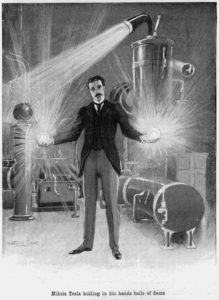
Later, Tesla’s study of high voltage and high frequency alternating currents lead to the development of a wide variety of vacuum tubes, for which he developed X-Ray techniques. One of his tubes has even been recognized as the primitive forerunner of the modern day microscope.
In addition, Tesla discovered the harmful effects of X-Rays and warned against regular exposure, long before they were widely discussed. His work on alternating current supply and the Tesla-Knott generator contributed to radiology so much that a contemporary radiology department would not even be able to function without his inventions.
Even though Nikola Tesla obtained around 300 patents in his lifetime, many are not accounted for, and other inventions developed by Tesla were not put into patent protection. He became reclusive in his later years and died alone and in debt.
Widely considered one of the greatest minds of the 19th and 20th centuries, Nikola Tesla had a hand in nearly every product we enjoy today in some form or another. His legacy lives on at the Nikola Tesla Museum in Belgrade, Serbia, which holds more than 160,000 original documents, over 2,000 books and journals, over 1,200 historical technical exhibits, over 1,500 photographs and the like, and over 1,000 plans and drawings. The Tesla Science Foundation is also dedicated to preserving the legacy of Nikola Tesla, and strives for his inventions and work to be included in school curriculums.
We have the brilliant Nikola Tesla to thank for the medical technology we enjoy and work with today. His work, along with those of many other scientists, engineers, and inventors, made it possible for medical imaging and radiology to continually break barriers and new ground as it does today. To learn more about Nikola Tesla, check out his autobiography, My Inventions: The Autobiography of Nikola Tesla, or head over to the Tesla Society homepage here.
And as always, if you are on the market for a refurbished MRI machine or one of our many other products available at Amber, contact us here.

